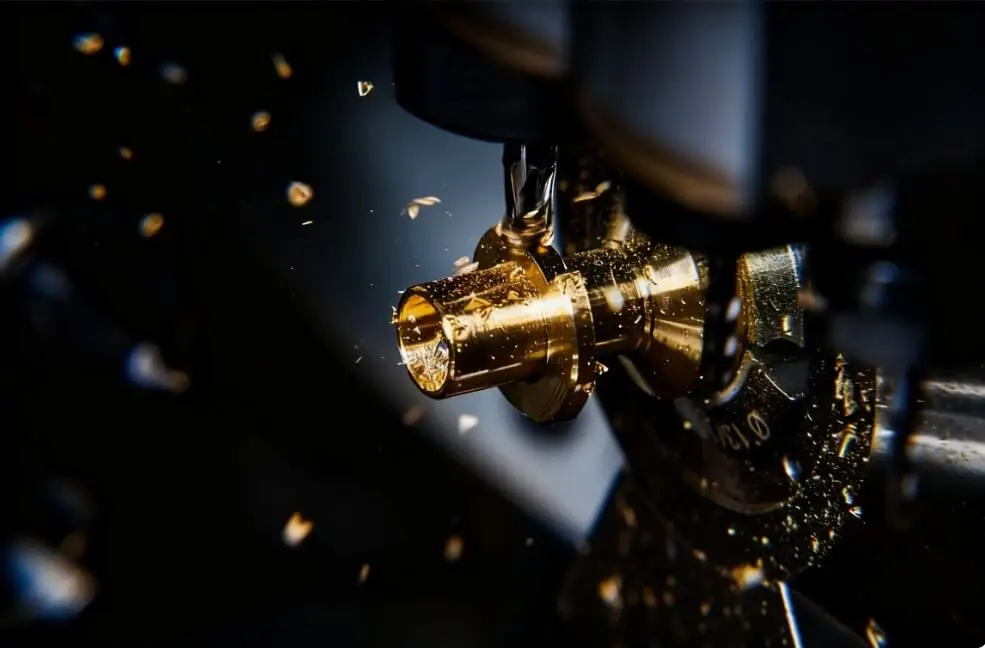What is Swiss Precision Machining: How It Works and Benefits
Swiss machining is a part manufacturing process often used to create tiny parts, such as watch parts. Xavier specializes in rapid prototyping, Swiss machining, CNC machining, screw machining, and precision grinding.
This article will broadly discuss the process of Swiss precision machining, its mechanism, characteristics, comparison with other manufacturing processes, and overall use in part manufacturing.
1.What is Swiss precision machining?
Swiss precision machining is a set of manufacturing techniques, such as Swiss turning and milling, that use specialized tool cutting machines to process metal raw materials into the desired parts. It uses Swiss machines to make extremely small parts with very tight tolerances.
The first Swiss machines were traditional, i.e. they did not have computer control centers. However, there are now Swiss designed CNC machines. Therefore, some people use the term “Swiss precision machining” to describe its use in the CNC industry.
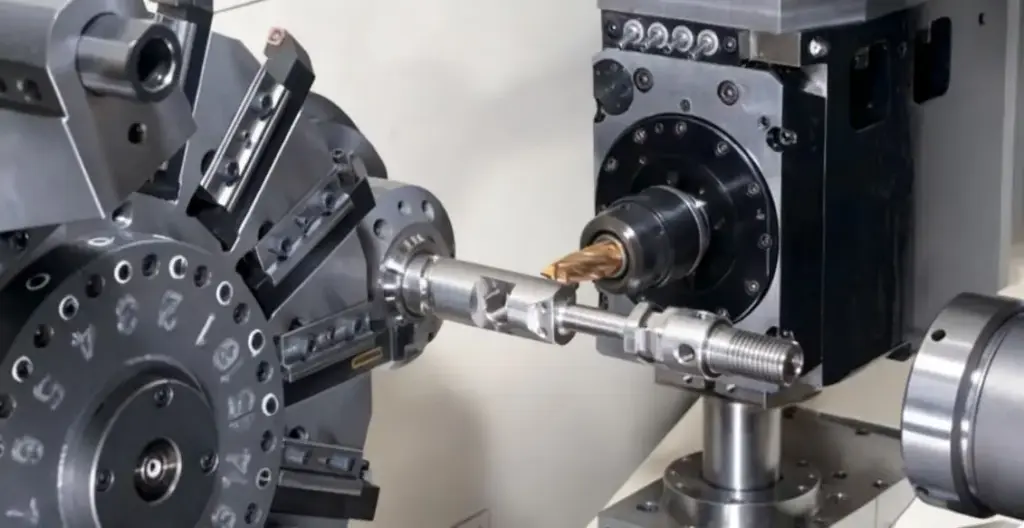
2.How do Swiss machines work?
Swiss machines have many names, such as Swiss screw machines and Swiss lathes. Their unique design makes them highly precise and accurate.
The machine has multiple axes and, unlike traditional CNC machining, is able to rotate and move back and forth along the Z axis. The operator feeds the bar stock into a guide bushing (which has a cutting tool installed).
Due to this arrangement, the guide bushing provides strong support regardless of the length of the workpiece. The force is located exactly where the material emerges from the guide bushing, which minimizes the action of the tool on the part and improves accuracy.
In addition, Swiss precision machining allows you to perform multiple operations at once.
3.Advantages of Swiss Precision Machining
Swiss precision machining has some advantages that make it more suitable for certain applications than other part manufacturing technologies. Most of the time, the industry prefers this process because of its high accuracy, technical level, and standard features. If you choose this process, you will get some of the following benefits:
1) Efficiency
Swiss machines have multiple axes that allow you to perform multiple operations at the same time. Therefore, they are efficient compared to other lathes without considering the complexity of the part design.
2) High Precision
High accuracy makes it suitable for manufacturing parts with complex shapes and tight tolerances. In addition, its action mechanism ensures that the tool force does not affect the workpiece, thereby improving accuracy.
3) Suitable for small parts
The machining process was originally used to process small parts such as electronic parts and watches. Although this has improved due to technological advances, technological advances have expanded its applicability to small parts. In addition, the high level of automation reduces human intervention or control.
4.Swiss machine tool tools
(1) Carbide turning tools
Used for external turning, end face processing and taper processing, it is the most commonly used tool type in Swiss lathes. Carbide materials have high hardness and strong wear resistance, which can ensure accuracy and tool life under high-speed cutting. The tool tip is small and suitable for processing small diameter and aspect ratio parts.
(2) High-speed steel tools
Commonly used for drilling, internal hole expansion and tapping. High-speed steel has good toughness and is not easy to break, which is suitable for fine processing of small parts. However, its wear resistance is not as good as carbide. It is usually used in low-speed or flexible processing scenarios.
(3) Micro drill bits
Used for precision hole processing, with a diameter as low as 0.1~1 mm. Micro drill bits are usually used with guide sleeves to ensure the stability and coaxiality of long holes. They are widely used in processing small parts such as electronics and medical devices.
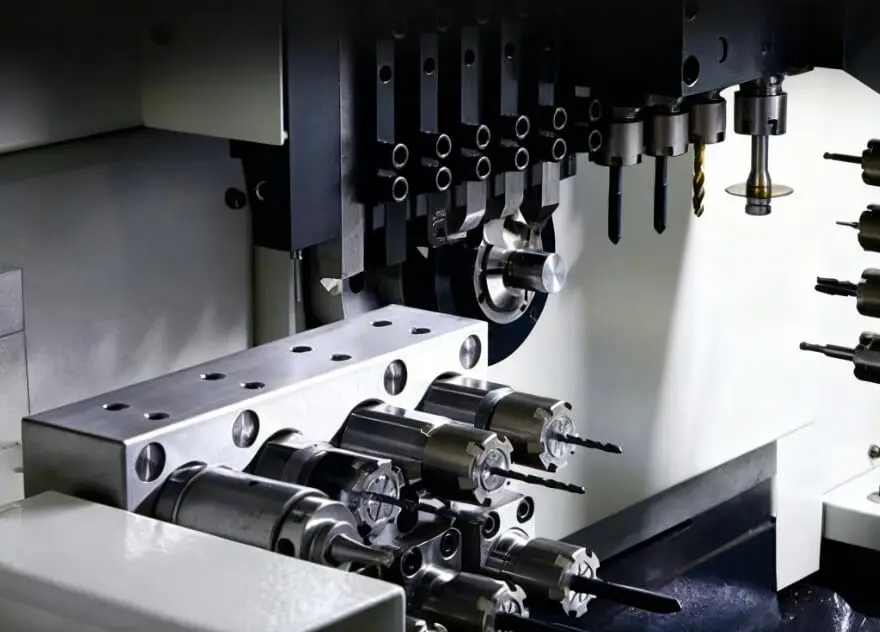
(4) Micro milling cutters
Used for grooves, cuts, side chamfers and complex contour processing. Micro milling cutters can cut horizontally while rotating the workpiece, achieving composite processing. They are usually made of carbide or coated carbide.
(5) Threading tools
Includes single-point thread cutters and hobs, used for internal and external thread processing. The tools have high precision and a small tip, which can process fine threads and meet the thread accuracy and surface quality requirements of Swiss lathes.
(6) Precision broaches/hobs
Used for high-precision hole processing and ensuring surface finish. Usually used for parts with strict hole diameter tolerances, low surface roughness can be obtained after processing. The tool material is mostly carbide or high-speed steel. Coated carbide is also used in some applications to improve wear resistance.
5.Comparison between Swiss precision machining and conventional machining
The main difference between Swiss precision machining and conventional machining is that conventionally machined parts are generally not as accurate as Swiss precision machined parts. Swiss machines have high precision, while conventional machining relies more on the steady hands and mind of the operator. Therefore, accuracy and repeatability are lower.
Another difference between the two machining methods is that conventional machining is more suitable for machining regular parts, while Swiss precision machining can effectively handle complex designs.
6.Comparison between Swiss precision machining and CNC machining
Swiss precision machining and CNC machining are similar in many ways. However, Swiss precision machining has its own advantages compared to CNC machining .
Although we can also say that they both use programming languages such as g-code and m-code. Now the question is, what is the difference in CNC machining process? Here are four differences between Swiss precision machining and CNC machining. Let’s explore them:
1) Shorter production cycle of highly complex parts
Modern Swiss lathes have about 7 to 13 axes. Therefore, it can perform multiple operations on the part faster in one machining cycle. These operations include drilling, face grooving, Swiss milling, thread cutting, parting off, and more.
However, conventional lathes such as CNC lathes have only 3 to 5 axes and may not be able to complete the machining of the part in one cycle, so the cycle time of CNC lathes is shortened and productivity is limited.
2) Coolant Type
Swiss-type lathes usually achieve better tolerances due to their coolant properties. Most of the time, Swiss machines require oil to operate better.
Unlike water, oil has a lower heat capacity. Therefore, Swiss precision machining transfers heat away from the cutting edge of the tool and cools it easily compared to CNC.
3) Segmented Machining
Unlike CNC machining, Swiss machines such as Swiss lathes produce parts in segments. This is very important to ensure that the final dimensions meet the required tolerance range.
4) Guide Bushing
Usually, machining involves clamping the bar stock in a collet that slides into the headstock behind the guide bushing. In the case of Swiss precision machining, the cutting tool operates close to the guide bushing, preventing any form of deflection.
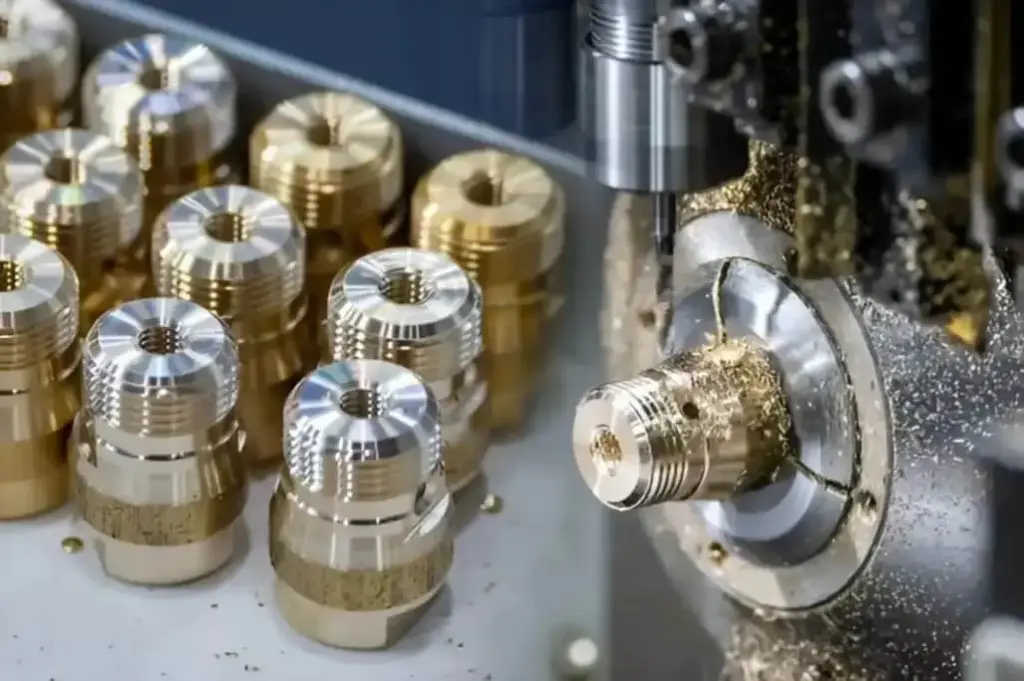
Therefore, Swiss machines have a movable headstock and can maintain the required tolerances regardless of the length of the workpiece.
However, conventional CNC machining is different. The operator holds the workpiece in the spindle chuck. Therefore, this type of machining is not suitable for longer workpieces as the workpiece can easily deflect.
7.When should you choose Swiss machining over conventional machining?
Swiss machining is one of the most productive machining technologies for part machining. In addition to its short cycle time, it is suitable for machining the most complex Swiss machining parts. Other reasons why you should consider CNC Swiss machining over conventional machining are mentioned below:
1) Complex Design
Swiss machining is more suitable than conventional machining because it is suitable for complex designs. The process encourages the use of CAM (Computer Aided Manufacturing) software, making it suitable for machining complex parts. Therefore, product design is improved and errors are reduced due to reduced human involvement.
2) Setup Time
Swiss machining has special features such as onboard automatic setup probes and high damping composite castings (HDCC) that reduce the setup time of cutting tools.
3) Design for Manufacturing (DfM)
DfM is a part of part manufacturing that involves optimizing product design for ease of manufacturing and assembly. Introducing CNC into Swiss precision machining will make effective and efficient manufacturing processes much easier than traditional methods
8.Practical Tips for Swiss Precision Machining
It is best to pay attention to several things when using Swiss precision machining. For example, you must choose the right Swiss CNC machine and be able to operate the machine. However, the following tips will help you reduce costs and machining time.
Tip 1: Model Drawing
In order to achieve a precise machining process, the model drawing must be very accurate, clear, easy to read, and precise. In addition, it allows the CNC operator to understand and machine your parts. A correct and accurate model drawing will help you improve the tolerances, dimensions, tolerances, and surface finish of your parts.
Tip 2: Standard Size Holes
Although Swiss precision machining technology is suitable for small and deep holes, you should make sure to use standard size holes. Using standard size holes will reduce machining difficulty and cost.
Tip 3: Avoid sharp corners
Drill bits are mainly rounded, making it difficult to machine sharp internal corners. Therefore, you need to avoid sharp corners in your design during Swiss milling. For projects that require this, you can try EDM or follow the options provided to you by the part manufacturing service.
In addition, you should ensure that the fillet radius is larger than the diameter of the drilling tool to prevent chatter and premature wear of the tool.
Tip 4: Tolerance
Tolerances in part manufacturing increase the cost and time of Swiss precision machining. Therefore, you should only assign tight tolerances to important parts of the part.
Tip 5: Wall Thickness
Too thin a wall thickness can cause metals to chatter during machining and plastics to warp and soften during machining, and these defects can reduce the surface quality and accuracy of the part.
9.Applications of Swiss Machined Parts
Swiss precision machining is used in many industries to manufacture precise and small parts. For example, Swiss precision machined parts are components of strikers, medical devices, shafts, clocks, etc.
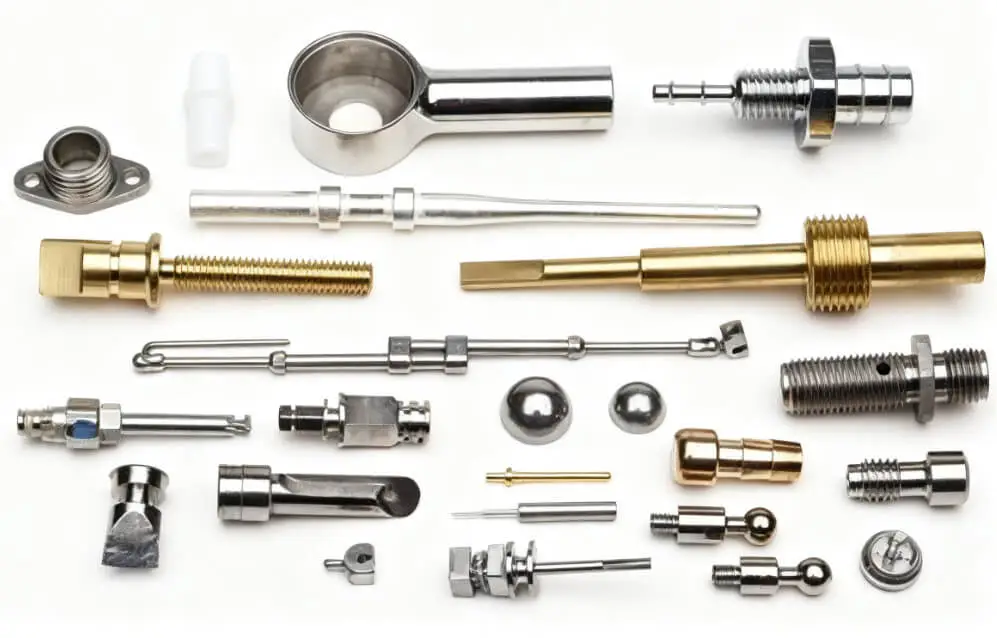
1) Aerospace Industry
The process is suitable for manufacturing a variety of aerospace mechanical parts such as engines, wings, wheels, and cockpit controls. The process is an ideal machining process because it can achieve precision machining with tight tolerances.
2) Defense Industry
Swiss machines are highly accurate and suitable for producing parts with complex geometric shapes such as helicopters, missiles, ships, and tanks.
3) Consumer Electronics
Components used in consumer electronics require tight tolerances, high precision, high quality, smooth surfaces, and complex molding processes. Therefore, machines such as Swiss lathes are suitable for manufacturing components, lens housings, connectors, and joints.
In addition, it is also suitable for semiconductor-based devices such as electronic panels, controls, interfaces, printed circuit boards, and controls.
4) Medical Devices
Medical parts manufacturing is another industry that uses Swiss machine tools. Common medical Swiss machine tool parts include hinges, anchors, electrodes, and pull rings used in medical devices such as surgery, drug delivery, etc.
5) Automotive Industry
Swiss machines are suitable for manufacturing parts such as bushings, shafts, fuel injection components, pins, brake system components, etc. It is very popular among automotive component manufacturers for its high precision.
Choose Xavier for Swiss Precision Machining Services
Industry uses machining methods to manufacture and customize parts that meet standard requirements. At the same time, to get the best machined parts for your industrial needs, you can choose precision machining.
What’s more, we offer a variety of precision machining services, and you can trust Xavier to provide you with the best service. Note that we provide precision milling, precision turning, finishing operations, and other machining services.
Meanwhile, our experienced engineers will conduct DFM analysis on your project to find the right solution to get good results. We also provide 100% parts inspection and competitive pricing.
Therefore, for projects that require precision machining, you can consult Xavier to get a quote and DfM feedback.
FAQs:
How tight can Swiss precision machining maintain tolerances?
Common tolerances are ±0.0001 inch (approximately ±0.0025 mm) or better, with some applications reaching ±0.00005 inch.
What part shapes and sizes are particularly well-suited for Swiss machining?
Slender, small-diameter parts with complex features (such as shallow holes, slender bosses, threads, tapers, etc.), especially micro-precision parts that require multiple tools to be processed in a single setup.
What materials are suitable for Swiss precision machining?
Many metals are suitable, including stainless steel, titanium alloys, tool steels, aluminum alloys, copper/brass, and some high-performance plastics.
What order volume makes Swiss machining worthwhile?
For complex parts with high precision and a high number of operations, even small batches (hundreds or thousands of pieces) can be cost-effective. However, for simple shapes or small batches with loose tolerances, a conventional lathe or rotary table may be more economical.
What are the biggest limitations or challenges of Swiss machining?
The guide bushing and bar stock dimensions must be consistent, tooling costs are high, machine setup and commissioning time is lengthy, and the machine is unsuitable for extremely large diameters or thick parts.
What operations can a Swiss machine perform?
Many Swiss machines feature multiple turrets, multiple axes, and flexible tooling, enabling turning, milling, drilling, threading, grooving, and partial chamfering. In many cases, these operations can be completed in a single setup.
What level of surface quality can be achieved?
Usually, surface roughness (Ra value) can be very low. Many Swiss machine parts meet assembly-grade or optical component requirements right out of the machine, requiring minimal post-processing.
